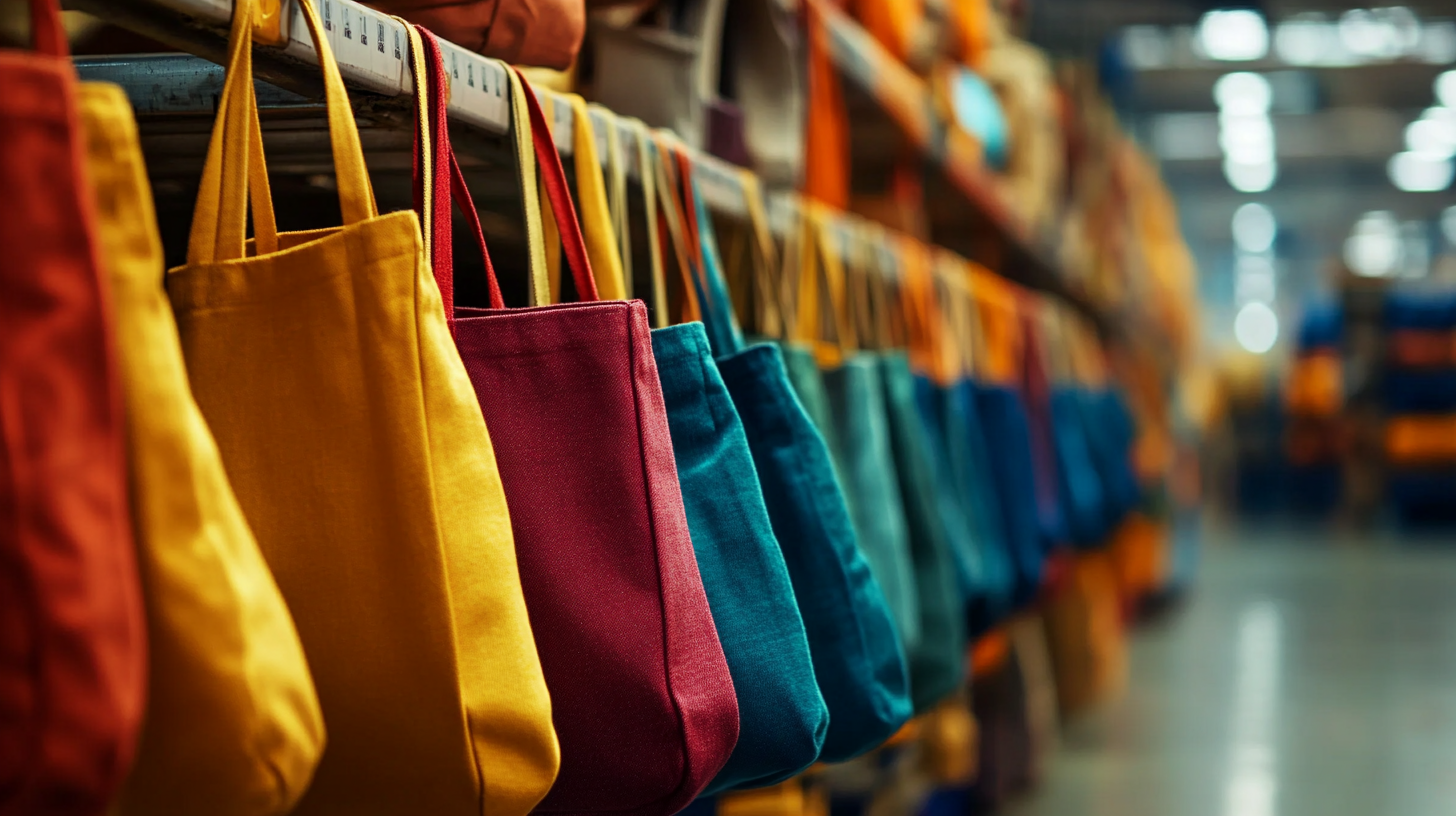In the landscape of international trade, few products have demonstrated resilience like the Canvas Tote, particularly for Chinese manufacturers facing the challenges of rising tariffs due to the US-China trade war. According to a report from IBISWorld, the US tote bag market is projected to reach $6.7 billion by 2025, reflecting a growing demand for sustainable and reusable shopping alternatives amidst increasing environmental awareness. Despite the imposing tariffs that began in 2018, which have affected a wide range of imports, Chinese manufacturers have showcased their adaptability by leveraging their established supply chains and competitive pricing strategies. The global push for eco-friendly products has further amplified the appeal of Canvas Totes, allowing these manufacturers to not only maintain but also expand their market share. This blog explores the innovative approaches that have enabled Chinese manufacturers to thrive in a complex trade environment, with a special focus on the Canvas Tote as a case study.

As the US-China trade war escalates with rising tariffs, Chinese manufacturers are leveraging innovative strategies to sustain their competitiveness in the canvas tote market. According to the "Global Cotton Tote Bags Market Analysis," the demand for eco-friendly bags is projected to grow by 10% annually, highlighting the increasing importance of adapting to market changes. To mitigate the financial impact of tariffs, manufacturers are optimizing their supply chains by sourcing raw materials locally, reducing dependency on imported goods, and thereby lowering operational costs.
Moreover, investing in advanced manufacturing technologies is another key strategy being employed. The "Industry 4.0 Report" indicates that companies utilizing automation and robotics can improve production efficiency by up to 30%. By implementing these technologies, Chinese manufacturers not only streamline their processes but also enhance product quality, making their canvas totes more appealing in a competitive market. Furthermore, expanding into online sales channels and diversifying product lines are also vital tactics that allow manufacturers to reach broader audiences, ensuring sustained growth despite external economic pressures.
| Strategy | Description | Impact on Production | Percentage of Cost Offset |
|---|---|---|---|
| Material Sourcing | Utilizing local suppliers for raw materials to reduce costs. | Increased efficiency and lower transportation costs. | 15% |
| Automation Investment | Implementing advanced machinery to enhance productivity. | Higher output with reduced labor costs. | 25% |
| Tariff Pass-Through | Adjusting product prices to reflect increased tariff costs. | Maintained profit margins despite tariff impact. | 20% |
| Market Diversification | Expanding export markets to reduce reliance on US. | Enhanced revenue streams and reduced risks. | 30% |
| Lean Manufacturing | Applying lean principles to minimize waste. | Increased productivity and reduced operational costs. | 10% |
The rise of eco-friendly canvas totes has transformed the retail landscape in the U.S. As consumers become increasingly aware of environmental issues, sustainable products are gaining traction. Canvas totes are not just functional; they symbolize a commitment to reducing plastic waste. This growing popularity has allowed Chinese manufacturers to thrive, even amidst the challenges posed by rising tariffs in the ongoing U.S.-China trade war.
One tip for consumers is to choose canvas bags that are made from organic or recycled materials. This ensures that your tote not only serves its practical purpose but also contributes positively to the environment. Additionally, consider selecting bags that are durable and versatile. A good canvas tote can be used for grocery shopping, beach trips, or everyday errands, making it a worthy investment.
For manufacturers and retailers, focusing on design and branding can significantly enhance the appeal of canvas totes. Attractive patterns and customization options can attract eco-conscious customers while also positioning the product as a fashionable alternative to traditional plastic bags. Engaging in eco-friendly messaging in marketing campaigns can resonate well with consumers who value sustainability.

In the face of rising tariffs due to the US-China trade war, Chinese manufacturers have leveraged innovative manufacturing techniques to carve a niche for themselves in the competitive canvas tote market. By embracing advanced technologies and enhancing production efficiency, they have managed to mitigate the impact of increased costs while meeting changing consumer demands for quality and sustainability.
One effective strategy has been the integration of automation and smart manufacturing processes, which not only reduces operational costs but also elevates product quality. This shift towards technological advancement ensures that manufacturers can produce canvas totes that stand out in design and durability, appealing to a wider audience.
**Tips:** Consider focusing on niche markets that prioritize sustainability and ethical production. Emphasizing these values in branding can attract environmentally conscious consumers. Additionally, leveraging local resources can help keep production costs low while maintaining quality, ensuring competitiveness even amid international pressures.

The rising tariffs resulting from the US-China trade war have posed significant challenges for many manufacturers, yet Chinese canvas tote producers have found a way to not only survive but thrive in this landscape. One key factor driving this growth is the increasing consumer trend towards sustainable and reusable products. As awareness of environmental issues escalates, more consumers are seeking alternatives to single-use plastics, leading to a surge in demand for eco-friendly options like canvas totes. This shift is evidenced by the growing popularity of these bags among environmentally conscious shoppers, students, and professionals alike.
In addition to sustainability, the versatility of canvas totes is a major draw for consumers. These bags, available in a variety of designs and sizes, cater to diverse needs—from grocery shopping to gym visits or as fashionable everyday accessories. Their durability further enhances their appeal, making them a cost-effective choice for buyers. Chinese manufacturers have adeptly capitalized on these consumer trends by offering high-quality, affordable products that align with modern values, thereby positioning themselves favorably in a competitive market despite tariff challenges.
In the face of rising tariffs resulting from ongoing US-China trade tensions, Chinese manufacturers have demonstrated remarkable adaptability, particularly in the canvas tote market. Companies are not merely reacting to trade challenges but are redefining their strategies to thrive amid uncertainty. They are increasingly focusing on product quality and differentiation, ensuring that their canvas totes are not only functional but also stylish and environmentally friendly. This approach helps them maintain competitive pricing while appealing to a growing consumer base that prioritizes sustainability.
Moreover, a proactive stance toward geopolitical shifts has led these manufacturers to explore diverse supply chains and innovative distribution networks. By investing in technology and logistics, they enhance their efficiency, allowing them to navigate the complexities introduced by tariffs effectively. As businesses tomorrow face unprecedented risks, the ability to pivot quickly and seize new market opportunities is crucial. This resilience is essential for success in today's dynamic global economy, where understanding trade dynamics and consumer preferences can make the difference between merely surviving or truly thriving.